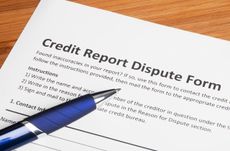Check Up on Your Homeowners Insurance
Make sure you have enough insurance to rebuild your home and cover common gaps in coverage.

Home prices in my area have bounced around a lot over the past few years. How do I know if I still have the right amount of homeowners insurance?
The amount of homeowners insurance you need is based on the cost to rebuild your house, not the market value. Even if housing values in your area have gone down, the cost of building materials may have increased, which would boost the replacement cost of your home. You can use the building-cost database that insurers use to estimate the replacement cost of your home at www.accucoverage.com (you’ll pay $7.95 for the service). The site asks about the size of the house, the building materials and other details. Or you can work with an agent or insurer to estimate the amount. Be specific about any upgrades to your house, including high-end materials you would like to be able to replace if the home were damaged.
Also be sure you’ve filled common gaps in coverage. For example, most homeowners insurance policies don’t automatically cover sewage backup, which can cause expensive damages if water or sewage backs up into your house. But you can generally get a rider that covers $10,000 to $20,000 in sewage backup damages for $50 to $75 per year.

Sign up for Kiplinger’s Free E-Newsletters
Profit and prosper with the best of expert advice on investing, taxes, retirement, personal finance and more - straight to your e-mail.
Profit and prosper with the best of expert advice - straight to your e-mail.
Flooding is not covered by homeowners policies, but you can get coverage through the federal government’s National Flood Insurance Program. Go to www.floodsmart.gov to look up your home’s risk of flooding and get price quotes.
Check the possessions coverage. Most homeowners policies limit coverage for possessions to no more than 75% of your dwelling coverage. For example, if you have a policy that provides $200,000 in coverage for your home, you’d have up to $150,000 in coverage for all of your possessions. But the policy may limit the coverage for certain categories of possessions, such as jewelry and antiques. If you have any valuable jewelry, artwork, antiques or other collectibles, you may want to buy special coverage to insure the items for their appraised value. This special coverage, called an endorsement or rider, also provides coverage for breakage, mysterious disappearance and theft from a location other than your home. Get the items reappraised every few years to make sure your coverage keeps up with their value.
And don’t skimp on liability coverage, which will protect your finances from lawsuits if, for example, someone gets hurt while visiting your home. It’s a good idea to have at least $300,000 to $500,000 in liability coverage, and you can buy an umbrella policy that adds an extra $1 million in coverage on top of both your home and auto insurance for about $200 to $400 per year. See How to Add a Personal Liability Umbrella Policy for more information.
To pay for the extra coverage, consider boosting your homeowners insurance deductible from $250 or $500 to $1,000 or more, which could reduce your premiums by up to 20% and prevent you from filing small claims that could lead to a rate increase or cost you a claims-free discount.

As the "Ask Kim" columnist for Kiplinger's Personal Finance, Lankford receives hundreds of personal finance questions from readers every month. She is the author of Rescue Your Financial Life (McGraw-Hill, 2003), The Insurance Maze: How You Can Save Money on Insurance -- and Still Get the Coverage You Need (Kaplan, 2006), Kiplinger's Ask Kim for Money Smart Solutions (Kaplan, 2007) and The Kiplinger/BBB Personal Finance Guide for Military Families. She is frequently featured as a financial expert on television and radio, including NBC's Today Show, CNN, CNBC and National Public Radio.
-
 Why Taiwan Semiconductor Stock Is Falling After Earnings
Why Taiwan Semiconductor Stock Is Falling After EarningsTaiwan Semiconductor beat expectations for the first quarter but its stock is notably lower. Here's why.
By Joey Solitro Published
-
 Strategies to Optimize Your Social Security Benefits
Strategies to Optimize Your Social Security BenefitsTo maximize what you can collect, it’s crucial to know when you can file, how delaying filing affects your checks and the income limit if you’re still working.
By Jason “JB” Beckett Published
-
 Credit Report Error? They All Matter
Credit Report Error? They All Mattercredit & debt Don't dismiss a minor error. It could be the sign of something more serious.
By Kimberly Lankford Published
-
 Insurance for a Learning Driver
Insurance for a Learning Driverinsurance Adding a teen driver to your plan will raise premiums, but there are things you can do to help reduce them.
By Kimberly Lankford Published
-
 529 Plans Aren’t Just for Kids
529 Plans Aren’t Just for Kids529 Plans You don’t have to be college-age to use the money tax-free, but there are stipulations.
By Kimberly Lankford Published
-
 When to Transfer Ownership of a Custodial Account
When to Transfer Ownership of a Custodial Accountsavings Before your child turns 18, you should check with your broker about the account's age of majority and termination.
By Kimberly Lankford Published
-
 Borrowers Get More Time to Repay 401(k) Loans
Borrowers Get More Time to Repay 401(k) Loansretirement If you leave your job while you have an outstanding 401(k) loan, Uncle Sam now gives you extra time to repay it -- thanks to the new tax law.
By Kimberly Lankford Published
-
 When It Pays to Buy Travel Insurance
When It Pays to Buy Travel InsuranceTravel Investing in travel insurance can help recover some costs when your vacation gets ruined by a natural disaster, medical emergency or other catastrophe.
By Kimberly Lankford Published
-
 What Travel Insurance Covers When Planes Are Grounded
What Travel Insurance Covers When Planes Are GroundedTravel Your travel insurance might help with some costs if your trip was delayed because of the recent grounding of Boeing 737 Max planes.
By Kimberly Lankford Published
-
 Ways to Spend Your Flexible Spending Account Money by March 15 Deadline
Ways to Spend Your Flexible Spending Account Money by March 15 Deadlinespending Many workers will be hitting the drugstore in the next few days to use up leftover flexible spending account money from 2018 so they don’t lose it.
By Kimberly Lankford Published